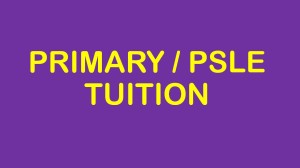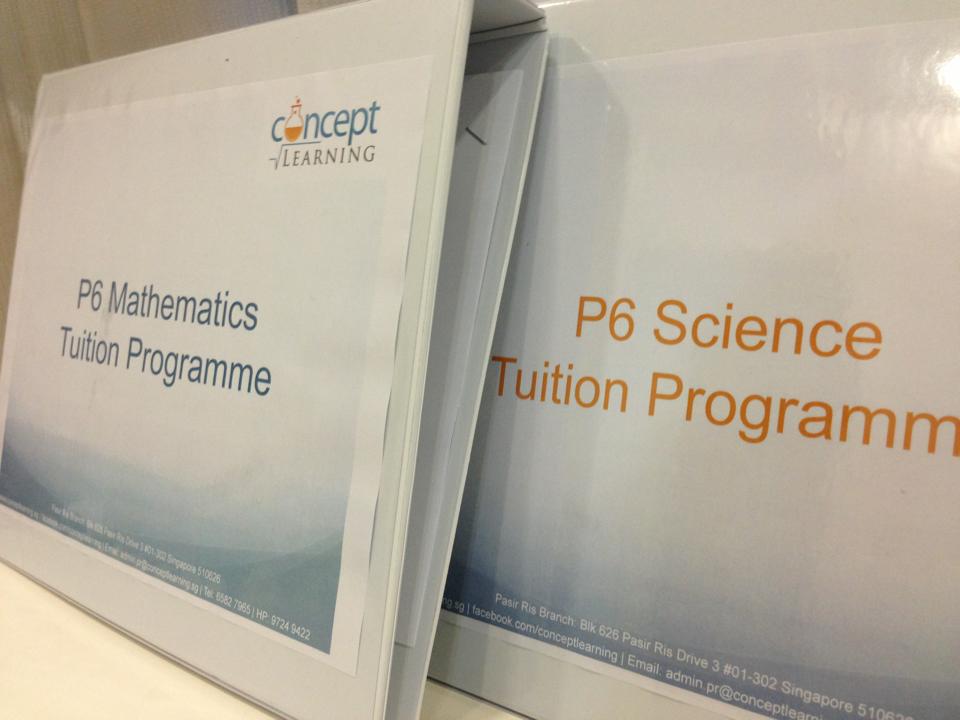Classes marked with a ‘*’ are Conceptual Mastery courses whereas those without a ‘*’ are Conceptual Drilling classes.
Conceptual Drilling classes are for students who need to strengthen their maths or science foundation, using constructivist and scaffolding approaches. Conceptual Mastery courses are for students who are ready to learn how to answer or solve challenging questions, using a metacognitive approach.
P3 Math*: Every Monday, 3.00 pm – 4.30 pm (Start Nov 18); Code: P3M1.
P3 Math: Every Wednesday, 3.00 pm – 4.30 pm (Start Nov 20); Code: P3M2.
P3 Science*: Every Thursday, 3.00 pm – 4.30 pm (Start Nov 21); Code: P3S1.
P4 Math: Every Monday, 3.00 pm – 4.30 pm (Start Nov 18); Code: P4M1.
P4 Math*: Every Tuesday, 3.00 pm – 4.30 pm (Start Nov 19); Code: P4M2.
P4 Science*: Every Friday, 3.00 pm – 4.30 pm (Start Nov 22); Code: P4S1.
P5 Math: Every Monday, 4.30 pm – 6.00 pm (Start Nov 18); Code: P5M1.
P5 Math*: Every Tuesday, 4.30 pm – 6.00 pm (Start Nov 19); Code: P5M2.
P5 Math: Every Saturday, 3.30 pm – 5.00 pm (Start 11 Jan); Code: P5M3.
P5 Science: Every Wednesday, 4.30 pm – 6.00 pm (Start Nov 20); Code: P5S1.
P5 Science*: Every Friday, 4.30 pm – 6.00 pm (Start Nov 19); Code: P5S2.
P5 Science: Every Saturday, 5.00 pm – 6.30 pm (Start 11 Jan); Code: P5S3.
P6 Math: Every Monday, 6.00 pm – 7.30 pm (Start Nov 18); Code: P6M1.
P6 Math*: Every Tuesday, 6.00 pm – 7.30 pm (Start Nov 19); Code: P6M2.
P6 Math*: Every Saturday, 9.30 am – 11.00 am (Start Nov 23); Code: P6M3.
P6 Math: Every Saturday, 12.30 pm – 2.00 pm (Start Nov 23); Code: P6M4.
P6 Science*: Every Friday, 6.00 pm – 7.30 pm (Start Nov 22); Code: P6S1.
P6 Science: Every Wednesday, 6.00 pm – 7.30 pm (Start Nov 20); Code: P6S2.
P6 Science*: Every Saturday, 11.00 am – 12.30 pm (Start Nov 23); Code: P6S3.
P6 Science: Every Saturday, 2.00 pm – 3.30 pm (Start Nov 23); Code: P6S4.
P6 Math: Every Monday, 6.00 pm – 7.30 pm (Start Nov 18); Code: P6M1.
P6 Math*: Every Tuesday, 6.00 pm – 7.30 pm (Start Nov 19); Code: P6M2.
P6 Math*: Every Saturday, 9.30 am – 11.00 am (Start Nov 23); Code: P6M3.
P6 Math: Every Saturday, 12.30 pm – 2.00 pm (Start Nov 23); Code: P6M4.
P6 Science*: Every Friday, 6.00 pm – 7.30 pm (Start Nov 22); Code: P6S1.
P6 Science: Every Wednesday, 6.00 pm – 7.30 pm (Start Nov 20); Code: P6S2.
P6 Science*: Every Saturday, 11.00 am – 12.30 pm (Start Nov 23); Code: P6S3.
P6 Science: Every Saturday, 2.00 pm – 3.30 pm (Start Nov 23); Code: P6S4.
Administrative Matters:
Location: Blk 627, Bukit Batok Central. Our location is just a 3-min walk from either the Bukit Batok MRT station or the Bukit Batok bus interchange. Buses that stop along the road in front of Blk 627 are numbers 157, 178, 66, 506, 173, 174, 176, 187, 941, 947, 985.
Max Class Size: 8
Monthly fee for each subject or slot for P6/P5/P4/P3 is $110/110/90/90 respectively, inclusive of materials fee. Discounts apply for multiple subjects or slots.
TO REGISTER, SMS <FULL STUDENT NAME>, <CODE> TO 97860411.
For enquiries, kindly call or sms to 9786 0411.
SEC 3 – SEC 5 CONCEPTUAL LEARNING SCHEDULE 2014
Sec 3 A. Math: Every Sunday, 11.00 am – 12.30 pm (Start 12 Jan); Code: S3M1.
Sec 3 Physics: Every Sunday, 9.30 am – 11.00 am (Start 12 Jan); Code: S3P1.
Sec 3 Chemistry: Every Sunday, 9.30 am – 11.00 am (Start 12 Jan); Code: S3C1.
Sec 4 Math (NA): Every Monday, 6.00 pm – 7.30 pm (Start Nov 4); Code: S4MN.
Sec 4 Math: Every Monday, 8.00 pm – 9.45 pm (Start 6 Jan); Code: S4M1.
Sec 4 A. Math: Every Tuesday, 8.00 pm – 9.45 pm (Start 7 Jan); Code: S4M2.
Sec 4 A. Math: Every Thursday, 8.00 pm – 9.45 pm (Start 9 Jan); Code: S4M3.
Sec 4 A. Math: Every Saturday, 4.00 pm – 5.45 pm (Start 11 Jan); Code: S4M4.
Sec 4 Physics: Every Friday, 8.00 pm – 9.45 pm (Start 10 Jan); Code: S4P1.
Sec 4 Physics: Every Saturday, 2.00 pm – 3.45 pm (Start 11 Jan); Code: S4P2.
Sec 4/5 Exp Science (Physics): Every Thursday, 6.00 pm – 7.30 pm; Code: S4P3.
Sec 4 NA Science (Physics): Every Thursday, 6.00 pm – 7.30 pm; Code: S4P4.
Sec 4 Chemistry: Every Tuesday, 8.00 pm – 9.45 pm (Start 7 Jan); Code: S4C1.
Sec 4 NA Science (Chemistry): Every Sunday, 11.00 am – 12.30 pm (Start 12 Jan); Code: S4C2.
Administrative Matters:
Location: Blk 627, Bukit Batok Central. (Our location is just a 3-min walk from either the Bukit Batok MRT station or the Bukit Batok bus interchange. Buses that stop along the road in front of Blk 627 are numbers 157, 178, 66, 506, 173, 174, 176, 187, 941, 947, 985)
Max Class Size: 8
Monthly fee for each subject or slot is $180 respectively, inclusive of materials fee. Discounts apply for multiple subjects or slots.
TO REGISTER, SMS <FULL STUDENT NAME>, <CODE> TO 97860411.
For enquiries, kindly call or sms to 9786 0411.
An important PSLE math concept to understand (Part 1)
Let me share with you a difficult concept normally tested in P5 or P6 Math. I’m not sure if it has a name. It makes use of the concept of difference between two values but it’s not the same as the Constant Difference concept, which refers to the idea of a particular difference between two values being the same despite making changes to other quantities. The concept that I’m about to introduce actually makes use of TWO differences, the difference between individual values and the difference in their total values. Quite a number of tough P6 qns are actually testing whether students know that there is a relationship between the difference between two individual values and the difference in their total values.
I think this is best explained without any unknown values. Let’s say a pencil costs $1 and a pen costs $1.50. The difference in their values is $0.50 right? Let’s call this the Individual Difference. Let’s say you purchase 10 of each, costing a total of $10 and $15 respectively. The difference in their total values is $5 right? Let’s call this the Total Difference. Is there a relationship between the Individual Difference (ID) and the Total Difference (TD)? Yes. Notice that if TD is divided by ID (5 / 0.50), what you’ll get is 10, which is the number of each item you purchased. If this is easy for you to understand, it is likely because all values are known and you were working forwards to find the total difference, and not working backwards to find the number of each item bought.
Let me now show you how a typical P6 question looks like:
John bought an equal number of pens and pencils. Each pencil costs 50 cents less than a pen. John paid a total of $5 more for the pens than for the pencils. How many pencils did John buy? (using TD/ID, the answer is 10. but notice how intriguing the question has become?)
Please also realise that the concepts of ratio, decimals, fractions and percentages are all related and interchangeable. So let’s make the above question harder:
John bought some pens and pencils. The ratio of the number of pencils he bought to the number of pens is 1:1. Each pencil costs $1 and each pen costs 50% more than a pencil. John paid a total of $5 less for the pencils than for the pens. What is the total number of pens and pencils that John bought? (answer: 20)
Another way of looking at the above problem is to see that since each pencil costs 50 cents less than each pen, it must have taken 10 of them to be a total of $5 less than the SAME quantity of pens.
Rgds,
Ilyasa,
Founder, Singapore Learner; Director, Concept Learning Pte Ltd
Related links:
(1) Challenging PSLE Math Programme for Medium to High Ability Students
(2) P6 MATH & SCIENCE, March & June INTENSIVE REVISION For PSLE 2013
===============================================================
For our latest timetable, click here => 
P6 (PSLE) Math & Science Tuition at Concept Learning
_______________________________________
TUITION CLASSES:
_______________________________________________________________
EDUCATIONAL SERVICES:
______________________________________________________________
By EX-MOE TEACHERS & EXPERIENCED TUTORS
@ BLK 644, BUKIT BATOK CENTRAL, #01-68. S(650644).
CALL 65694897 OR SMS 98530744 OR 97860411.
For more details, kindly visit www.conceptlearning.sg, or call 97860411.


